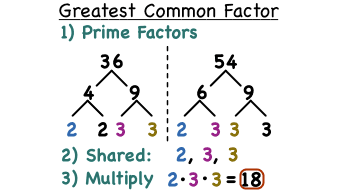





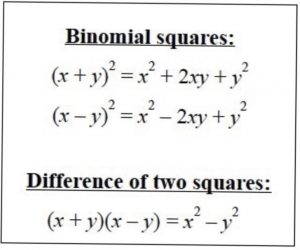
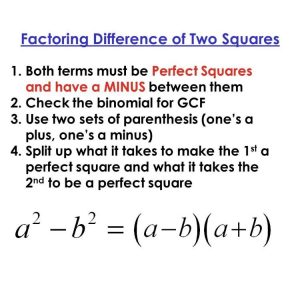

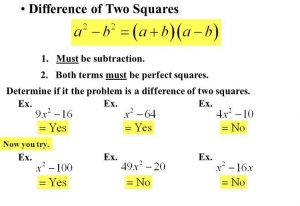

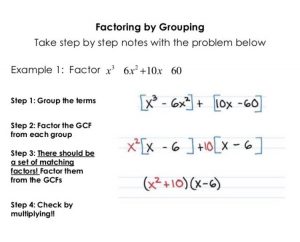

 Factoring:
Factoring:
Factoring Polynomials using GCF, Grouping and Difference of Two Squares (DOTS)
By Academic Tutors 101
Factoring
Factoring is a key skill that will be used as a step toward solving more complex problems as you progress in your Math studies. Factoring allows us to determine the parts of a number that multiply to some total product. It is a way of breaking apart numbers (decomposition of a number) by a Greatest Common Factor {GCF}. The GCF is the largest number, common to one or more factors. So, what is a Factor then? A factor can be a number, a quantity or an algebraic expression. However, when this definition is taught, it still seems arbitrary to me. This is partly because not all Math is easy to explain using plain language, for if it was, we wouldn’t use numerals. For the purpose of succeeding under the current academic standards, we have to form the connection between describing a mathematical problem or procedure without just enumerating it. That being said, its important to know that we are going to factor problems to break them down AND put them back together. So depending on which side of the equation we are working on, we will sometimes consider a factor as quantities, that when multiplied together, produce a given number or expression BUT it may also be described inversely, as an algebraic expression that is approximately divisible by an integer or GCF.
Greatest Common Factor
The greatest common factor is the number that can evenly divide two numbers. To determine the GCF of larger numbers use the Prime Factorization Method.
Polynomials
A polynomial (from Greek Poly- “many”) See, “History of the Word, Polynomial” is a mathematical expression with more than one term (monomial), two terms (binomial), or three terms (trinomial), but many terms. The expression may contain coefficients and variables that can be manipulated using the operations of addition, subtraction, multiplication and (non-negative) exponents. A quadratic function has four terms but is an equation in the second degree. A quadratic function can be solved using a special formula, the Quadratic Formula. Let’s look at how this formula is derived:
When we see equations in this form, we can plug them into the formula.
Note that the graph of this function will be parabolic and have two real roots according to the Complex Conjugate Root Theorem.
Methods for Factoring
Difference of Two Squares (DOTS)
Grouping
If you have a four term polynomial (a quadratic equation) with no GCF, you can factor the equation by grouping.

